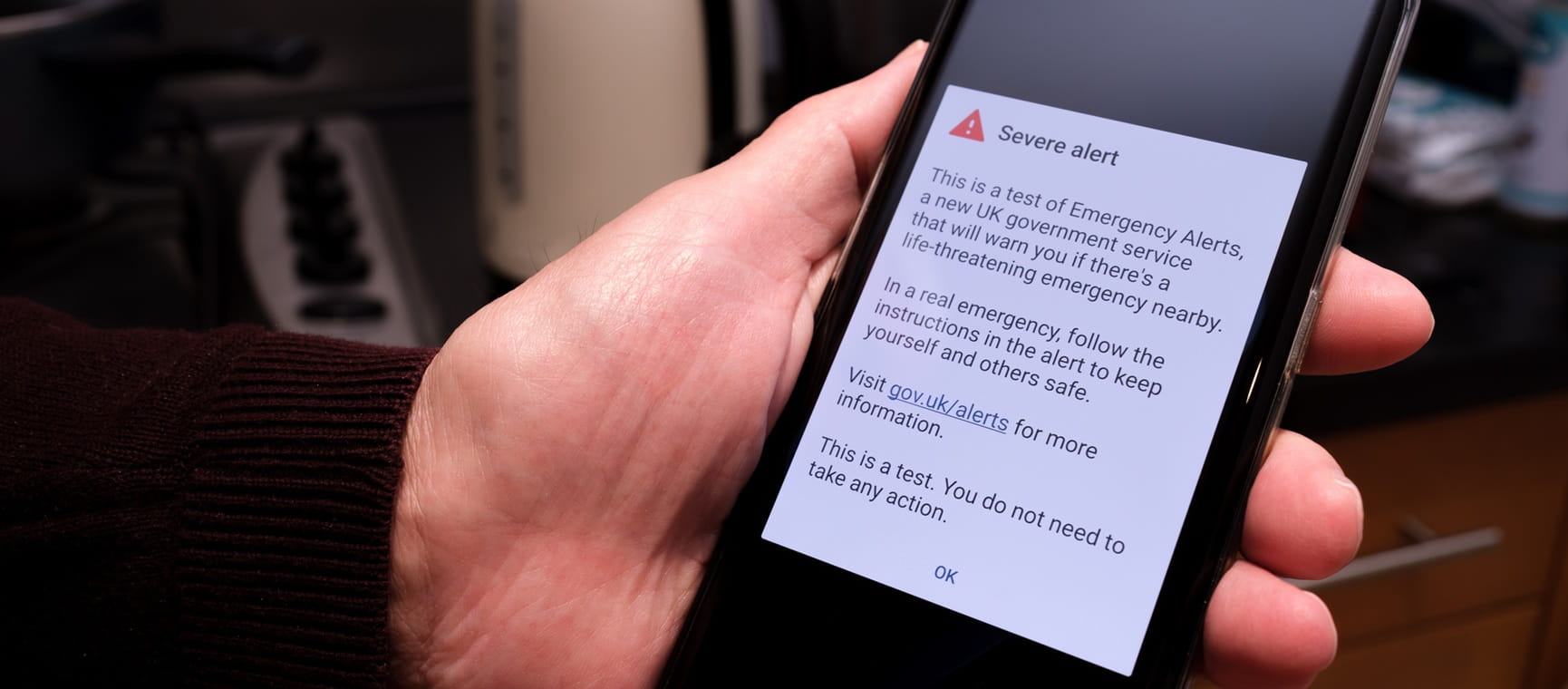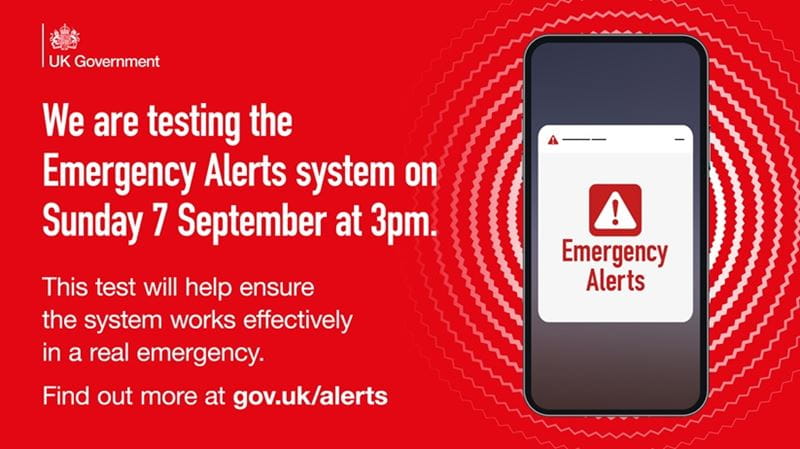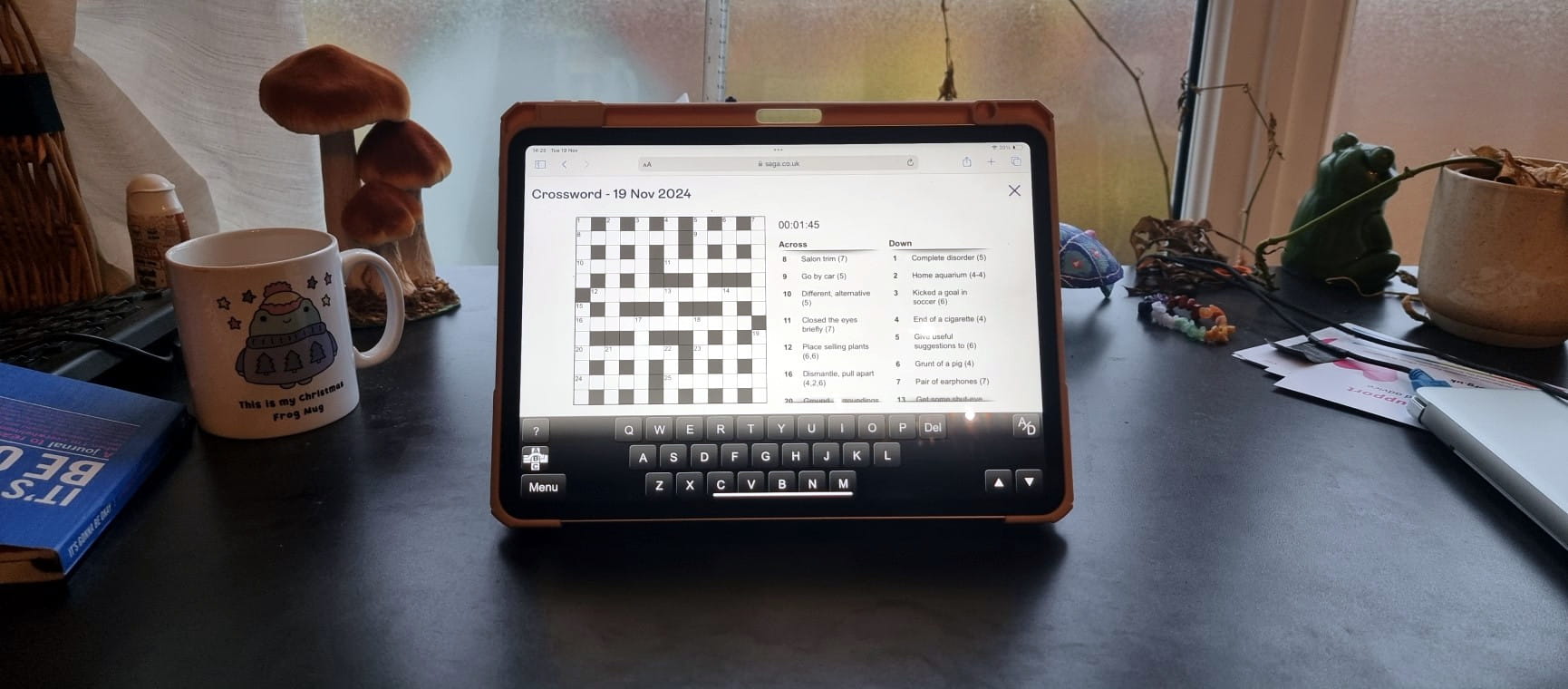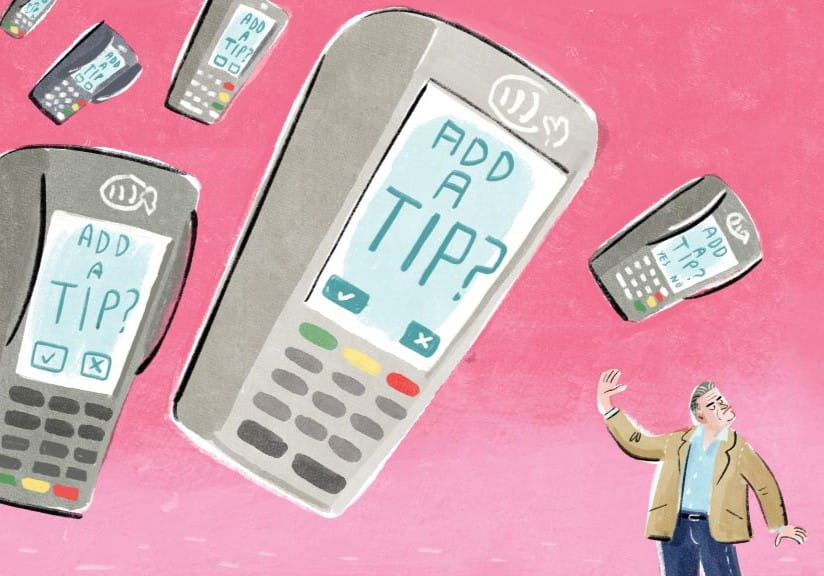UK emergency alert test: when it’s happening and what to expect
The national test alert will be sent out to all mobile phones on Sunday 7 September at 3pm.

The national test alert will be sent out to all mobile phones on Sunday 7 September at 3pm.

On Sunday 7 September, at 3pm the national system for sending emergency alerts to mobile phones in the UK will be tested for the second time.
Emergency alerts are for situations where there is imminent danger to life, such as extreme weather or a terror attack.
The previous test was in April 2023, and the government says this latest alert is part of its continuing programme to ensure that the system works correctly and to get the public used to it.
Chancellor of the Duchy of Lancaster, Pat McFadden, said: “Just like the fire alarm in your house, it’s important we test this system so that we know it will work if we need it.
“The alerts have the potential to save lives.”
At 3pm millions of mobile devices connected to the 4G and 5G network will receive a text message of less than 100 words and will make a very loud beeping siren-like sound for roughly ten seconds.
Your phone or tablet will also vibrate during the alert and a message will show on the screen making it clear that it is a test.
The message will say: “This is a test of Emergency Alerts, a UK government service that will warn you if there’s a life-threatening emergency nearby.
“You do not need to take any action. In a real emergency, follow the instructions in the alert to keep yourself and others safe.
“Find simple and effective advice on how to prepare for emergencies at gov.uk/prepare.
“Visit gov.uk/alerts for more information or to view this message in Welsh. Ewch i gov.uk/alerts am ragor o wybodaeth neu i weld y neges hon yn y Gymraeg.”
You will need to acknowledge the alert before you can use other features on the phone. Even if it is switched to silent, you will still get the alarm.
If you’re driving or riding when you get an alert, the Government has advised not pick up your phone.
You can receive six penalty points and a £200 fine if you hold or use a phone while driving, so if you really want to read the message, wait until you can pull over somewhere safe.
Since the first national test of the Emergency Alerts system in April 2023, five alerts have been sent, including during major storms when lives were at risk.
The largest use of the system saw approximately 4.5 million people in Scotland and Northern Ireland receive an alert during Storm Éowyn in January 2025.
Three million people across Wales also received the alert in December 2024.
In both these cases red weather warnings had been issued, meaning there was a risk to life.
I was one of three million people in Wales who received the emergency alert in December 2024. I was at home on a Friday evening watching TV when the siren sounded. It was incredibly loud, unlike any other alert or ring tone on my phone, and gave me the fright of my life – even my dogs started barking!
My friend owns a pub which was full of Friday evening drinkers. She said the noise from the alarms on everyone’s mobiles was deafening – it emptied the pub.

In an emergency, mobile phone masts in the surrounding area will broadcast an alert. Every compatible mobile phone or tablet in range of a mast will receive it.
As it’s all location based, you’ll get alerts based on your current location – not where you live or work.
Emergency alerts work on all 4G and 5G phone networks in the UK and your device does not need to be connected to mobile data or wi-fi to get them.
It’s estimated that about 90% of phones will receive the test. iPhones running iOS 14.5 or later and Android phones and tablets running Android 11 or later will all receive them. You do not need to turn on location services to receive the alert.
Government advice is to make sure your mobile phone has been updated with the latest software, to ensure you receive these in the future.
You will not receive alerts if your device is turned off or in airplane mode, you are connected to a 2G or 3G network or you are using wi-fi only.
As the system uses the cell tower your phone is connected to, your phone number isn’t needed to send out the alert. No additional data such as your device or location will be collected.
The system will only be used to warn you about an immediate threat to life, so you won’t receive any spam messages from the government.
The government advises you to keep the alerts on for your own safety, but for some it could be safer to turn them off.
Refuge and Women’s Aid have raised concerns that the alerts are a real risk to those suffering domestic abuse who may have secret phones hidden from their perpetrators.
It’s very simple to opt out of these alerts. Go to your phone’s settings and:
On iPhones, enter the notifications tab and scroll to the bottom. You can then switch off “severe alerts” and “extreme alerts”.
On Android phones, search for “emergency alert”, then use the toggles to turn off the alerts you do not want.
Phillipa Cherryson is senior digital editor for Saga Magazine. Phillipa has been a journalist for 30 years, writing for national newspapers, magazines and reporting onscreen for ITV. In her spare time she loves the outdoors and is an Ordnance Survey Champion and trainee mountain leader.
View author page

Whether you're looking for straightforward insurance or cover that's packed with extras, our home insurance has plenty of options for people over 50.

Subscribe to the award-winning Saga Magazine for just £9.95 and receive the next 6 issues, delivered direct to your door PLUS a free Great British Puzzle Book.
A bumper book packed with fun puzzles, from word and logic puzzles to relaxing dot-to-dots and spot the differences, all designed to take you on a unique and intriguing tour of our fascinating island.

The ultimate guide to Saga Puzzles, full of technical tips, tricks and hints.

With the start of the new financial year on 6 April, our money expert explains the changes to your pension, benefits and taxes.





